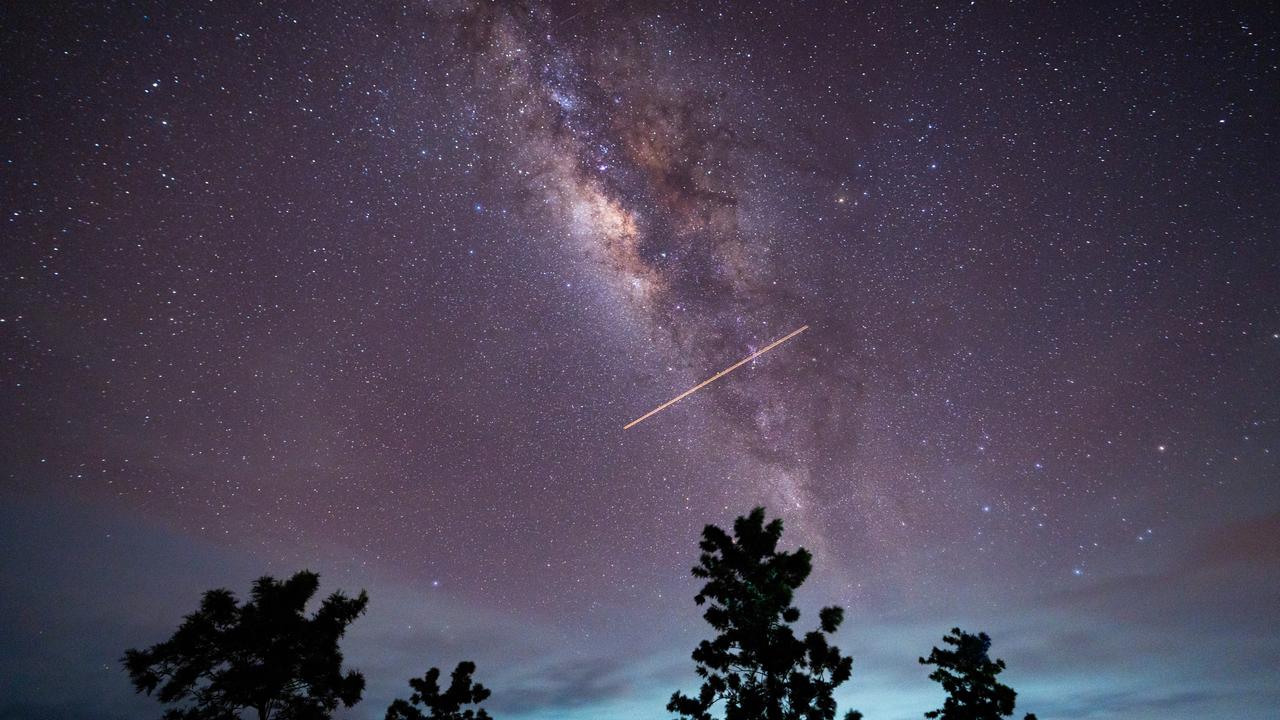Five jaw-dropping James Webb Space Telescope images stun scientists
The highly-anticipated first full-colour images captured by NASA’s James Webb Space Telescope have been released, stunning scientists.
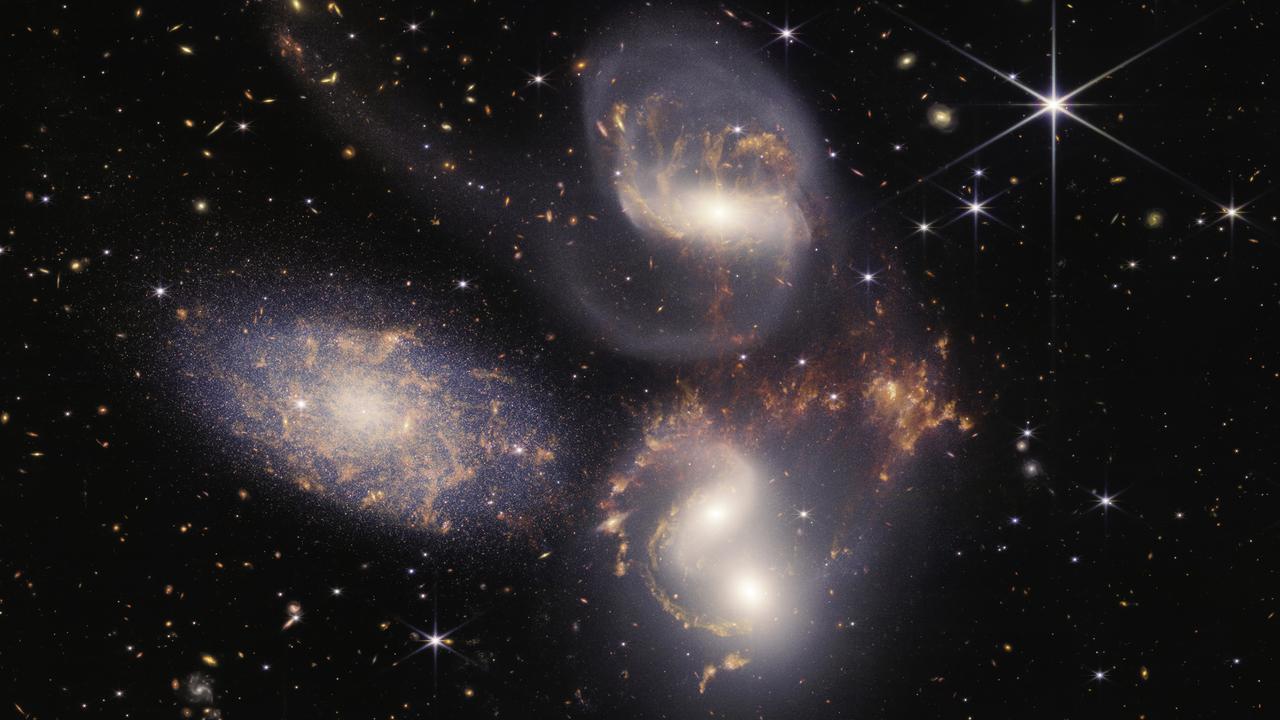
The cosmic cliffs of a stellar nursery and a quintet of galaxies bound in a celestial dance: NASA released the next wave of images from the James Webb Space Telescope Tuesday, heralding a new era of astronomy.
“Every image is a new discovery,” said NASA administrator Bill Nelson. “Each will give humanity a view of the universe that we’ve never seen before.”
Released one by one at the Goddard Space Flight Center, the new images demonstrated the full power of the $10 billion observatory, which uses infrared cameras to gaze into the distant universe with unprecedented clarity.
“They’re beautiful and they’re full of wonderful discoveries and science, and lots of things we haven’t identified are in there,” Nobel-winning cosmologist and Webb senior project scientist John Mather told AFP.
On Monday, Webb revealed the sharpest image to date of the early universe, teeming with thousands of galaxies going back more than 13 billion years.
The latest tranche included the “mountains” and “valleys” of a star-forming region called NGC 3324 in the Carina Nebula, dubbed the “Cosmic Cliffs,” 7600 light years away.
“For the first time we’re seeing brand new stars that were previously completely hidden from our view,” said NASA astrophysicist Amber Straughn.
Stream your news live & on demand with Flash for $8/month and no lock in contracts. New to Flash? Try 1 month free. Offer ends 31 October, 2022 >
Southern Ring Nebula
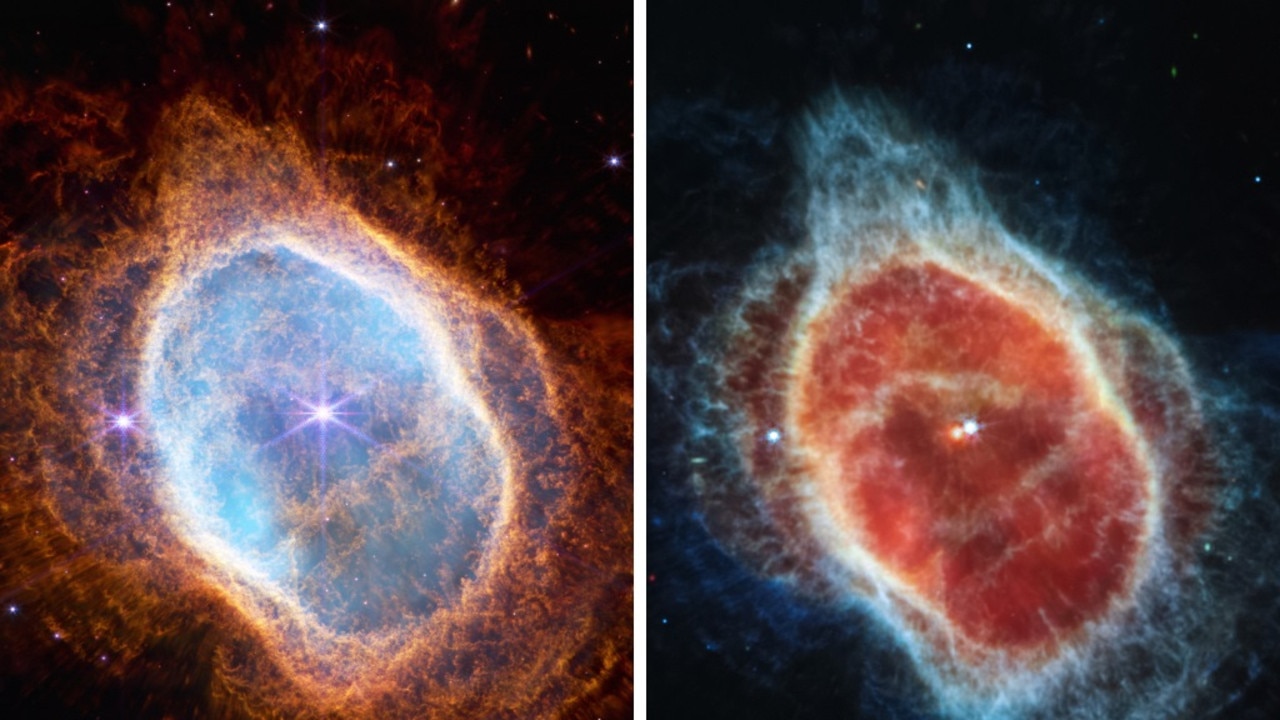
Some stars save the best for last.
The dimmer star at the centre of this scene has been sending out rings of gas and dust for thousands of years in all directions, and NASA’s James Webb Space Telescope has revealed for the first time that this star is cloaked in dust.
Two cameras aboard Webb captured the latest image of this planetary nebula, catalogued as NGC 3132, and known informally as the Southern Ring Nebula. It is approximately 2500 light-years away.
Webb will allow astronomers to dig into many more specifics about planetary nebulae like this one – clouds of gas and dust expelled by dying stars. Understanding which molecules are present, and where they lie throughout the shells of gas and dust will help researchers refine their knowledge of these objects.
Carina Nebula
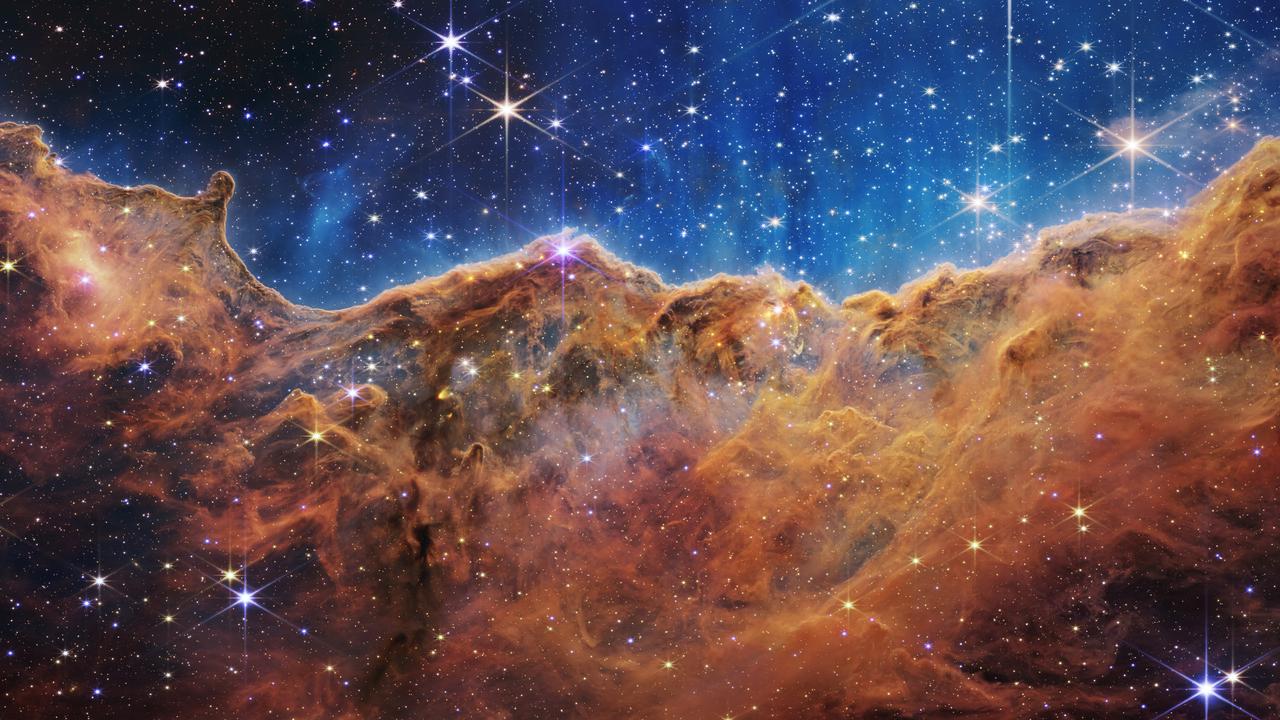
This landscape of “mountains” and “valleys” speckled with glittering stars is actually the edge of a nearby, young, star-forming region called NGC 3324 in the Carina Nebula. Captured in infrared light by NASA’s new James Webb Space Telescope, this image reveals for the first time previously invisible areas of star birth. Called the Cosmic Cliffs, Webb’s seemingly three-dimensional picture looks like craggy mountains on a moonlit evening. In reality, it is the edge of the giant, gaseous cavity within NGC 3324, and the tallest “peaks” in this image are about 7 light-years high. The cavernous area has been carved from the nebula by the intense ultraviolet radiation and stellar winds from extremely massive, hot, young stars located in the centre of the bubble, above the area shown in this image.
WASP-96 b

NASA’s James Webb Space Telescope has captured the distinct signature of water, along with evidence for clouds and haze, in the atmosphere surrounding a hot, puffy gas giant planet orbiting a distant Sun-like star.
The observation, which reveals the presence of specific gas molecules based on tiny decreases in the brightness of precise colours of light, is the most detailed of its kind to date, demonstrating Webb’s unprecedented ability to analyse atmospheres hundreds of light-years away.
While the Hubble Space Telescope has analysed numerous exoplanet atmospheres over the past two decades, capturing the first clear detection of water in 2013, Webb’s immediate and more detailed observation marks a giant leap forward in the quest to characterise potentially habitable planets beyond Earth.
SMACS 0723
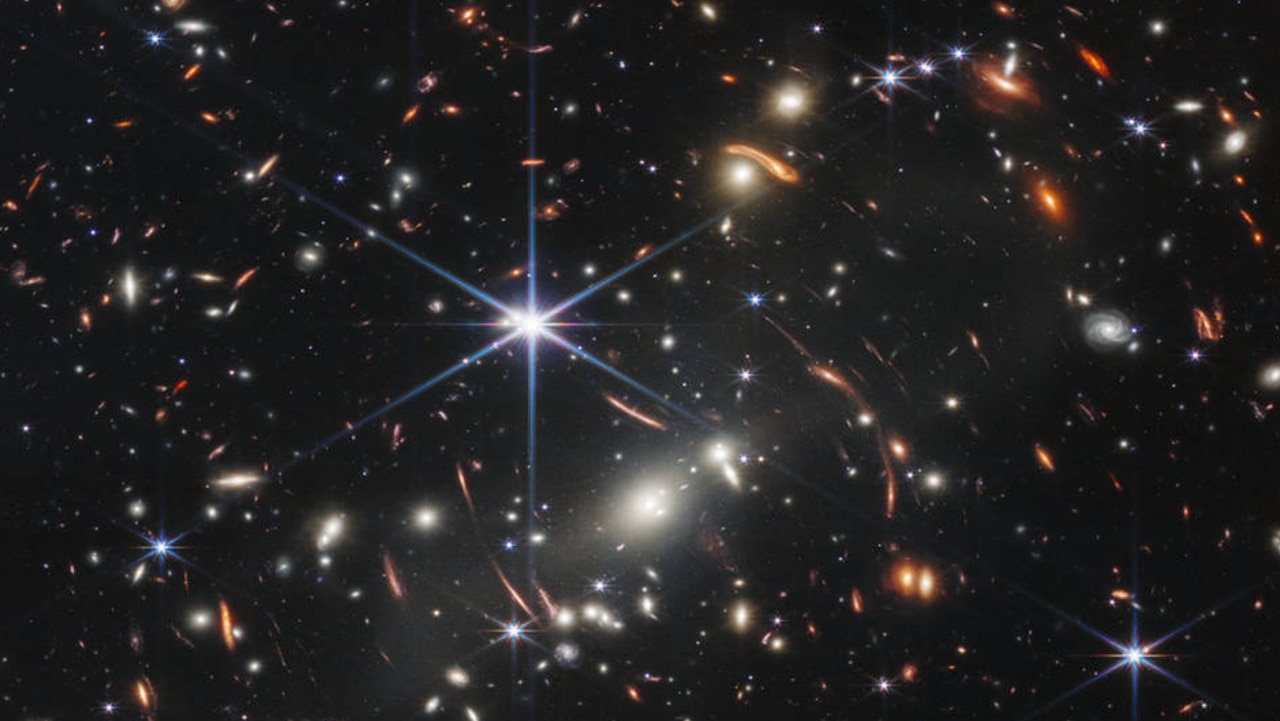
NASA’s James Webb Space Telescope has produced the deepest and sharpest infrared image of the distant universe to date. Known as Webb’s First Deep Field, this image of galaxy cluster SMACS 0723 is overflowing with detail.
Thousands of galaxies – including the faintest objects ever observed in the infrared – have appeared in Webb’s view for the first time. This slice of the vast universe covers a patch of sky approximately the size of a grain of sand held at arm’s length by someone on the ground.
President Joe Biden unveiled this image during a White House event.
Stephan’s Quintet
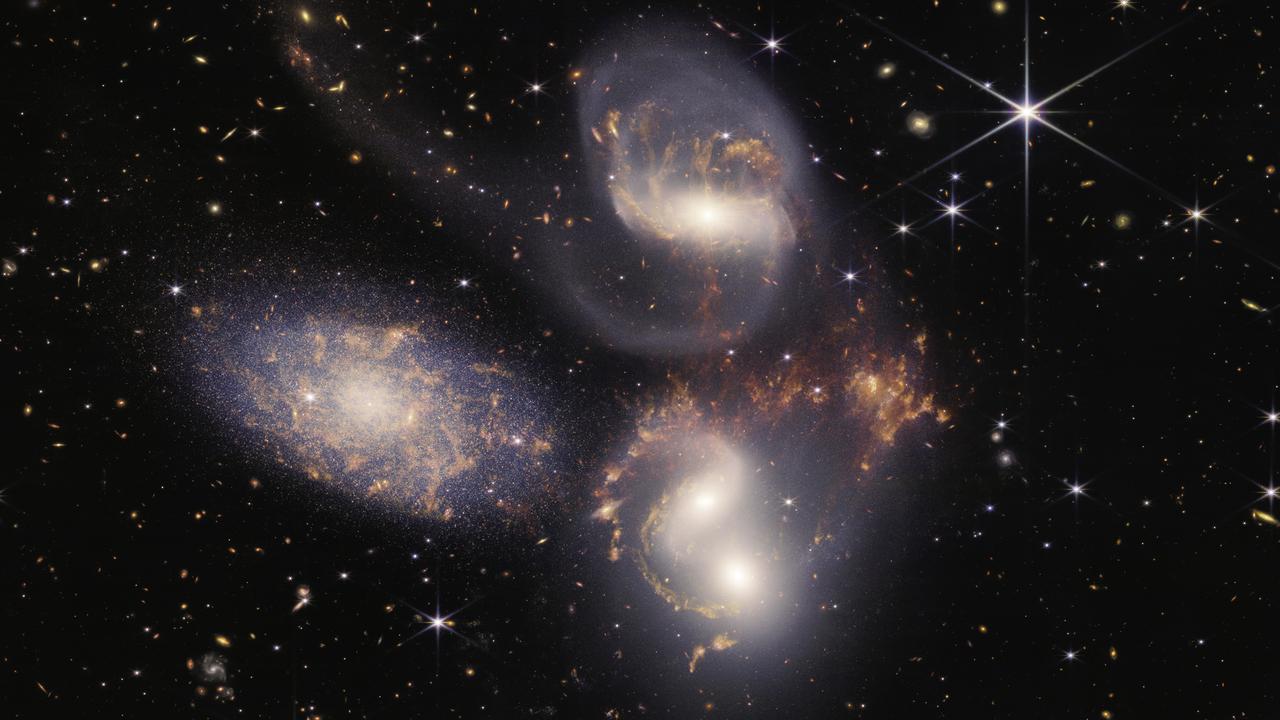
Stephan’s Quintet, a visual grouping of five galaxies, is best known for being prominently featured in the holiday classic film, “It’s a Wonderful Life.” Today, NASA’s James Webb Space Telescope reveals Stephan’s Quintet in a new light. This enormous mosaic is Webb’s largest image to date, covering about one-fifth of the Moon’s diameter. It contains over 150 million pixels and is constructed from almost 1000 separate image files. The information from Webb provides new insights into how galactic interactions may have driven galaxy evolution in the early universe. With its powerful, infrared vision and extremely high spatial resolution, Webb shows never-before-seen details in this galaxy group. Sparkling clusters of millions of young stars and starburst regions of fresh star birth grace the image. Sweeping tails of gas, dust and stars are being pulled from several of the galaxies due to gravitational interactions. Most dramatically, Webb captures huge shock waves as one of the galaxies, NGC 7318B, smashes through the cluster.
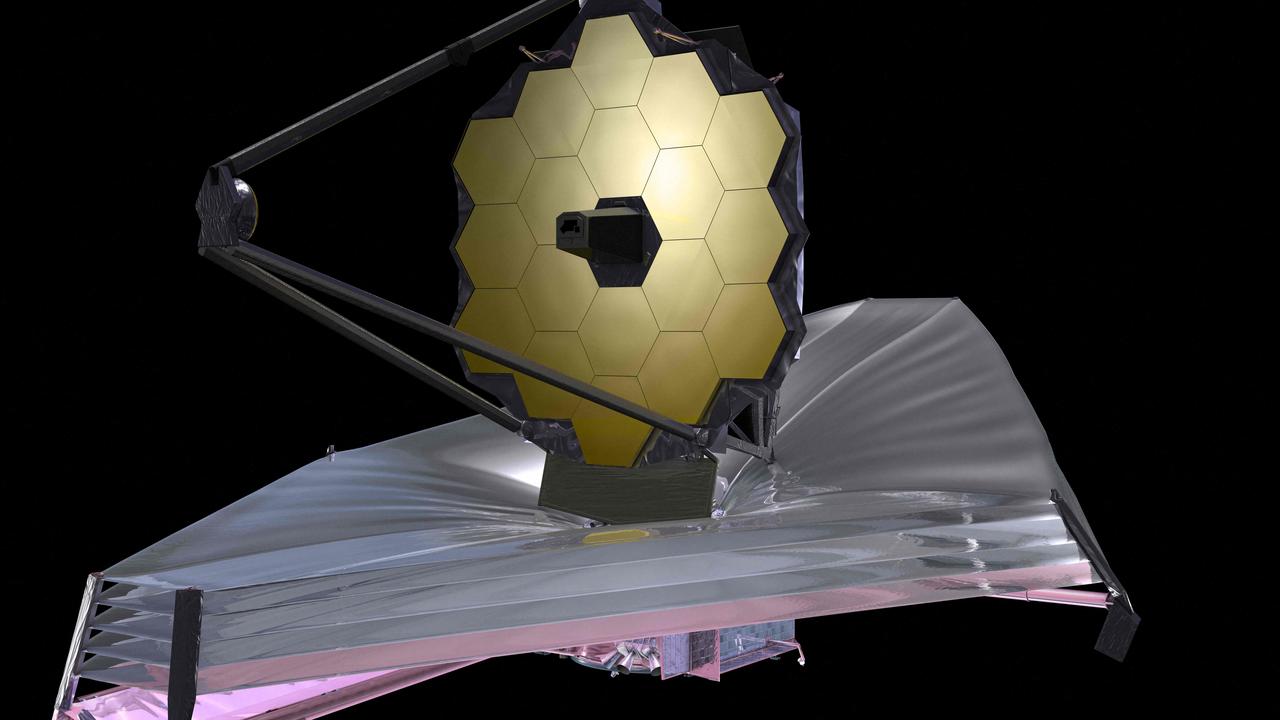
Stellar nurseries and graveyards
At the centre of Stephan’s Quintet is a black hole called an active galactic nucleus, “which means stuff is flowing in, it gets cooked to high temperatures, and some of it gets spit back out again,” explained Mather.
Studying the black hole will allow scientists to better understand the one at the centre of our own Milky Way, called Sagittarius A*.
A dim star at the centre of the Southern Ring Nebula was found for the first time to be cloaked in dust, as it spews out rings of gas and dust in its death throes.
Understanding the molecules present in such stellar graveyards can help scientists learn more about the process of stellar death.
The telescope also detailed water vapour in the atmosphere of a faraway giant gas planet.
The spectroscopy — an analysis of light that reveals detailed information — was of planet WASP-96 b, which was discovered in 2014.
Scientists will next hope to train the spectrographic instruments on small rocky worlds such as our own, to search for signs of habitability.
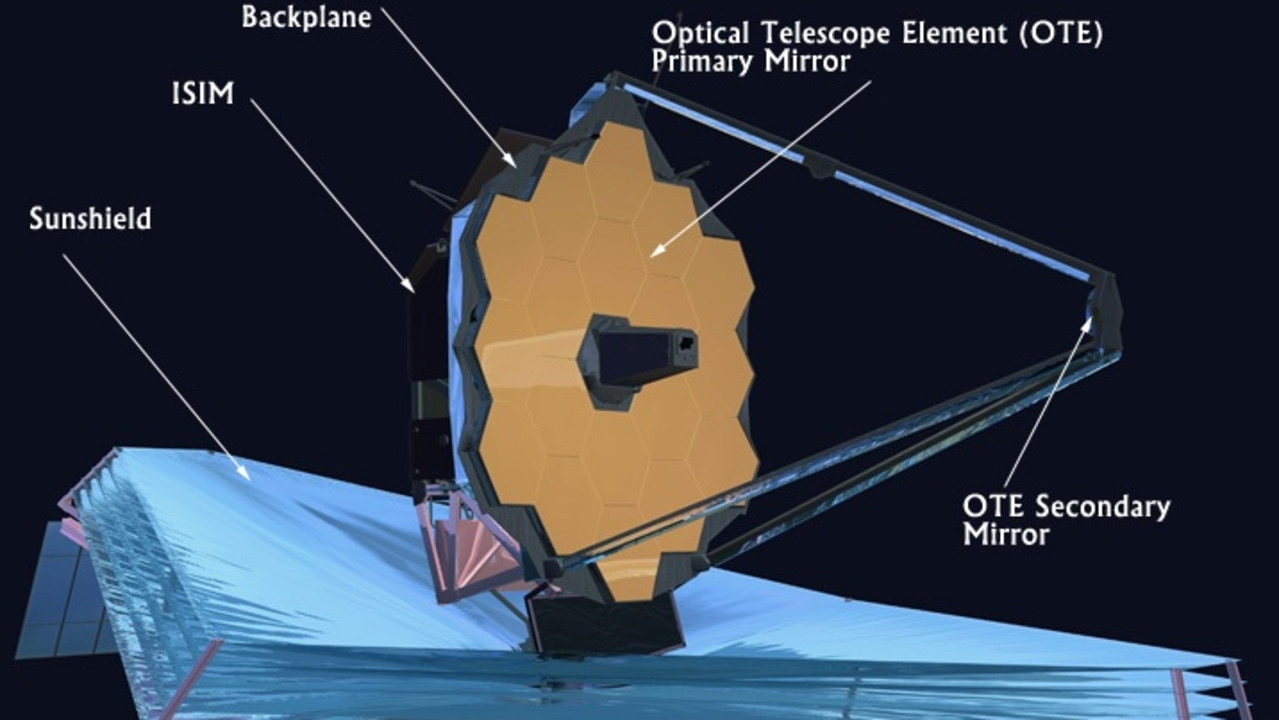
Fundamental discoveries expected
Webb’s first images have set the space community alight, and will also be shown on giant screens in New York City’s Times Square and in London.
Launched in December 2021 from French Guiana on an Ariane 5 rocket, Webb is orbiting the Sun at a distance of 1.6 million kilometres from Earth, in a region of space called the second Lagrange point.
It remains in a fixed position relative to the Earth and Sun, with minimal fuel required for course corrections and manoeuvring its instruments.
A wonder of engineering, Webb is one of the most expensive scientific platforms to date, comparable to the Large Hadron Collider at CERN, and also among the most complex machines ever built.
Webb’s primary mirror is over 6.5 meters wide and is made up of 18 gold-coated mirror segments. Like a camera held in one’s hand, the structure has to remain very still for the best shots, with Webb’s engineers minimising its wobble to just 17 millionths of a millimetre.
Its pointing accuracy is equivalent to firing a bullet from Washington and hitting a coin on top of a tower in Los Angeles, Charlie Atkinson, chief engineer for its main builder Northrop Grumman, told AFP.
After the first images, astronomers around the globe will get shares of time on the telescope, with projects selected competitively through a process in which applicants and selectors don’t know each other’s identities, to minimise bias.
Thanks to an efficient launch, NASA estimates Webb has enough propellant for a 20-year life, as it works in concert with the Hubble and Spitzer space telescopes to answer fundamental questions about the cosmos — including those scientists don’t yet know to ask.
“We don’t know what we don’t know yet,” said Straughn.
Hubble played a key role in discovering that dark energy is causing the universe to expand at an ever-growing rate, “so it’s hard to imagine what we might learn with this 100 times more powerful instrument.
- AFP


